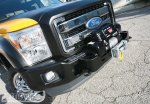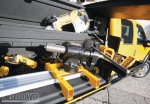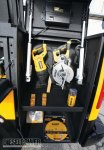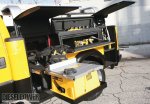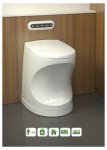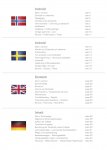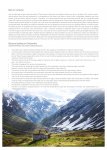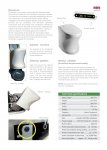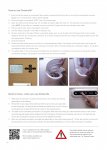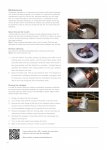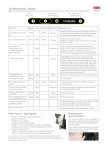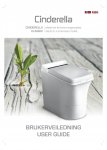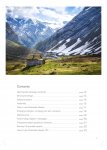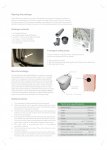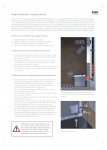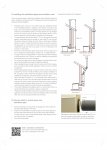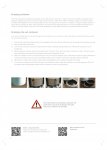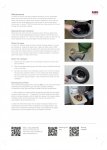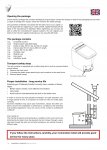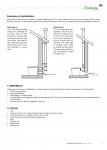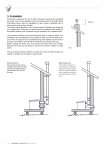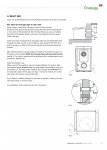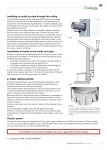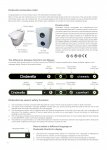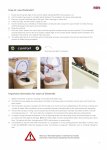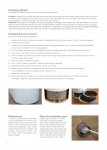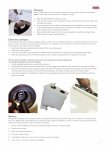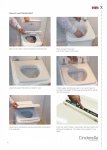biotect
Designer
so .
CONTINUED FROM PREVIOUS POST
********************************************
2. Farm Camping: A two-way street that's about much more than monetary exchange
********************************************
And here are some vides about Brit-Stops, Fattore Amico, Espana Discovery, and Landvergnügen :
Abundant videos about France Passion were already posted in #2395 and #2396 at http://www.expeditionportal.com/for...w-6x6-Hybrid-Drivetrain?p=2013650#post2013650 . Both the Italian and the German videos above do a good job explaining the "one-night-free" camping on a farm concept. But most on ExPo probably don't have these languages, so I’ll summarize the relevant bits.
First off, it’s a bit surprising that the German couple can camp for a night free on a farm, even though they have only a trailer or “caravan”, one that apparently does not have a shower. This particular German farm also does not have toilets or showers available for use by guests, but it provides electricity for a nominal fee. Seems that different organizations draw the line in different places. France Passion does not permit trailers or "caravans":
See https://www.france-passion.com/en/motorhomers/faq . Landvergnügen draws the line below caravans, and only excludes tents. Harvest Host is similar to Landvergnügen, whereas Brit-Stops follows the France Passion model more closely, and also excludes trailers or "caravans" – see https://harvesthosts.com/faq_page.htm#What_kind_of_vehicles_are_allowed and http://www.britstops.com/britstops-faq.php .
The German video mentions an interesting detail that I haven’t seen explicitly stated on any websites: that host farms are limited to a maximum of three camping vehicles per night. I was a bit concerned about this, because on the web I’ve come across a few images that are described as France Passion farms, hosting more than three campers. The whole point to camping on a farm is to get away from the “parking lot” experience that prevails at many RV campgrounds. But if one arrives at a farm and has to wedge oneself in between 6 or 10 other campers, then what’s the point? I wonder if all farm-camping organizations have a 3-camper limit, or whether this is unique to Landvergnügen?
Both the German and the Italian videos underscore something mentioned before. The farmers who sign up for this are not just in it for the money. In the German video the farmer claims that he does not really care whether people buy produce from his shop. Rather, these are farmers who like meeting new people. Farming can be a very lonely lifestyle, and farm camping also serves the social needs of farmers. The exchange in farm camping is not merely monetary, and at a social level it's most definitely not a one-way street. Farm camping does not just serve the need of campers for more "authentic" forms of travel, travel that escapes the hermetically sealed bubble of RV campgrounds. When a farmer meets and gets to know traveling motorhomers, in a way he/she travels too.
Both videos as well as the British video mention that farm-camping provides an opportunity to buy fresh, high-quality produce directly from the farmer. For many campers this is a significant "plus“. The Italian video mentions that such produce is sold at cost with a slight markup, and one doesn’t pay for middlemen, distribution, etc. So farm-camping is a very “green” and environmentally friendly way to vacation. It helps sustain local small producers, and in the case of Brit-Stop, also small-town pubs. All three videos stress that the one-night-free format is very advantageous for motorhomers who want to travel spontaneously, fast, and economically, and who don’t want to be tied down to a single RV park for weeks.
********************************************
3. Taking Bienvenue A La Ferme Global, and Designing a TerraLiner to Match
********************************************
Now if a TerraLiner were available that had extreme-boondocking capabilities, and if eventually much cheaper versions were manufactured whose cost was comparable to current Class-A mainstream motorhomes, one could imagine an entrepreneur or two creating a global website roughly equivalent to Harvest Host or France Passion. Except that, instead of offering just one-night stays, it would hook up globally-capable, extreme-boondocking motorhomes with farms around the world willing to accommodate them for weeks or even months.
Granted, most farm-camping networks developed so far have followed the one-night-free model. The major exception would be "Bienvenue A La Ferme", the partner-website of France Passion -- see http://www.bienvenue-a-la-ferme.com , http://www.bienvenue-a-la-ferme.com/sejours-accueil-de-camping-car , https://translate.google.co.uk/tran...om/sejours-accueil-de-camping-car&prev=search , http://www.bienvenue-a-la-ferme.com...-notre-offre-d-accueil-de-camping-cars/145288 , ,https://translate.google.co.uk/tran...om/sejours-accueil-de-camping-car&prev=search , https://translate.google.co.uk/tran...-d-accueil-de-camping-cars/145288&prev=search , and https://translate.google.co.uk/tran....bienvenue-a-la-ferme.com/actualites?type_evt[0]%3D464108 .
This does not mean that more farm-camping networks serving the needs of elderly couples could not be developed, elderly couples who want to slow travel. France Passion has now been successfully exported as a fast-camping model to at least 9 other countries. So there's no reason to think that "Bienvenue A La Ferme" could not be exported too, and made global. The web has changed everything, making completely new forms of accommodation and travel possible, for instance, "Couch Surfing" and "Air BnB" -- see https://www.couchsurfing.com and http://www.airbnb.com . Protocols then get put in place to screen participants on both sides, tag and exclude bad apples, etc. So I've been imagining something similar to "Bienvenue A La Ferme" eventually emerging to serve farmers and more elderly, slow-travelling motor-homers worldwide. But what's needed first is a motorhome that does not require traditional RV campground facilities, and that can extreme-boondock mostly in silence.
For instance, a motorhome that does not need a paved pitch. In the Harvest Host images big Class A motorhomes seem to be driving into large fields. I wonder how many times they get stuck, and the farmer has to do recovery? The Wynns also mention that some of the most beautiful Harvest Host farms and vineyards are located well off the beaten path, at the ends of gravel/dirt roads that are not easy for conventional motorhomes to travel -- see http://www.gonewiththewynns.com/harvest-hosts-free-rv-parking-farms-wineries . So expedition-motorhome-type wheels and frames would seem very desirable for farm camping.
Furthermore, there probably exist lots of farms that would like to participate in such networks, but they do not meet even the minimal accessibility or camping requirements; for instance, that they should have a reasonably level and firm surface for camping that can be accessed by conventional motorhomes -- see http://www.britstops.com/becomeahost.php and https://harvesthosts.com/for_prospective_hosts.htm . But if instead the RV world became more populated by expedition motorhomes with better bad-road and off-road capabilities, hillier farms with more challenging properties and/or access could participate too.
********************************************
CONTINUED IN NEXT POST.
..
CONTINUED FROM PREVIOUS POST
********************************************
2. Farm Camping: A two-way street that's about much more than monetary exchange
********************************************
And here are some vides about Brit-Stops, Fattore Amico, Espana Discovery, and Landvergnügen :
Abundant videos about France Passion were already posted in #2395 and #2396 at http://www.expeditionportal.com/for...w-6x6-Hybrid-Drivetrain?p=2013650#post2013650 . Both the Italian and the German videos above do a good job explaining the "one-night-free" camping on a farm concept. But most on ExPo probably don't have these languages, so I’ll summarize the relevant bits.
First off, it’s a bit surprising that the German couple can camp for a night free on a farm, even though they have only a trailer or “caravan”, one that apparently does not have a shower. This particular German farm also does not have toilets or showers available for use by guests, but it provides electricity for a nominal fee. Seems that different organizations draw the line in different places. France Passion does not permit trailers or "caravans":
Only self-sufficient motor homes (WC, waste, electricity…) can use the host network. It would be impossible for the farms and vineyards participating in the network to accommodate the enormous numbers of caravans circulating in Europe, and a number of access routes may also be impassable for caravans. You’ll find farms and vineyards that can welcome caravans on our partner’s website www.bienvenue-a-la-ferme.com .
See https://www.france-passion.com/en/motorhomers/faq . Landvergnügen draws the line below caravans, and only excludes tents. Harvest Host is similar to Landvergnügen, whereas Brit-Stops follows the France Passion model more closely, and also excludes trailers or "caravans" – see https://harvesthosts.com/faq_page.htm#What_kind_of_vehicles_are_allowed and http://www.britstops.com/britstops-faq.php .
The German video mentions an interesting detail that I haven’t seen explicitly stated on any websites: that host farms are limited to a maximum of three camping vehicles per night. I was a bit concerned about this, because on the web I’ve come across a few images that are described as France Passion farms, hosting more than three campers. The whole point to camping on a farm is to get away from the “parking lot” experience that prevails at many RV campgrounds. But if one arrives at a farm and has to wedge oneself in between 6 or 10 other campers, then what’s the point? I wonder if all farm-camping organizations have a 3-camper limit, or whether this is unique to Landvergnügen?
Both the German and the Italian videos underscore something mentioned before. The farmers who sign up for this are not just in it for the money. In the German video the farmer claims that he does not really care whether people buy produce from his shop. Rather, these are farmers who like meeting new people. Farming can be a very lonely lifestyle, and farm camping also serves the social needs of farmers. The exchange in farm camping is not merely monetary, and at a social level it's most definitely not a one-way street. Farm camping does not just serve the need of campers for more "authentic" forms of travel, travel that escapes the hermetically sealed bubble of RV campgrounds. When a farmer meets and gets to know traveling motorhomers, in a way he/she travels too.
Both videos as well as the British video mention that farm-camping provides an opportunity to buy fresh, high-quality produce directly from the farmer. For many campers this is a significant "plus“. The Italian video mentions that such produce is sold at cost with a slight markup, and one doesn’t pay for middlemen, distribution, etc. So farm-camping is a very “green” and environmentally friendly way to vacation. It helps sustain local small producers, and in the case of Brit-Stop, also small-town pubs. All three videos stress that the one-night-free format is very advantageous for motorhomers who want to travel spontaneously, fast, and economically, and who don’t want to be tied down to a single RV park for weeks.
********************************************
3. Taking Bienvenue A La Ferme Global, and Designing a TerraLiner to Match
********************************************
Now if a TerraLiner were available that had extreme-boondocking capabilities, and if eventually much cheaper versions were manufactured whose cost was comparable to current Class-A mainstream motorhomes, one could imagine an entrepreneur or two creating a global website roughly equivalent to Harvest Host or France Passion. Except that, instead of offering just one-night stays, it would hook up globally-capable, extreme-boondocking motorhomes with farms around the world willing to accommodate them for weeks or even months.
Granted, most farm-camping networks developed so far have followed the one-night-free model. The major exception would be "Bienvenue A La Ferme", the partner-website of France Passion -- see http://www.bienvenue-a-la-ferme.com , http://www.bienvenue-a-la-ferme.com/sejours-accueil-de-camping-car , https://translate.google.co.uk/tran...om/sejours-accueil-de-camping-car&prev=search , http://www.bienvenue-a-la-ferme.com...-notre-offre-d-accueil-de-camping-cars/145288 , ,https://translate.google.co.uk/tran...om/sejours-accueil-de-camping-car&prev=search , https://translate.google.co.uk/tran...-d-accueil-de-camping-cars/145288&prev=search , and https://translate.google.co.uk/tran....bienvenue-a-la-ferme.com/actualites?type_evt[0]%3D464108 .
This does not mean that more farm-camping networks serving the needs of elderly couples could not be developed, elderly couples who want to slow travel. France Passion has now been successfully exported as a fast-camping model to at least 9 other countries. So there's no reason to think that "Bienvenue A La Ferme" could not be exported too, and made global. The web has changed everything, making completely new forms of accommodation and travel possible, for instance, "Couch Surfing" and "Air BnB" -- see https://www.couchsurfing.com and http://www.airbnb.com . Protocols then get put in place to screen participants on both sides, tag and exclude bad apples, etc. So I've been imagining something similar to "Bienvenue A La Ferme" eventually emerging to serve farmers and more elderly, slow-travelling motor-homers worldwide. But what's needed first is a motorhome that does not require traditional RV campground facilities, and that can extreme-boondock mostly in silence.
For instance, a motorhome that does not need a paved pitch. In the Harvest Host images big Class A motorhomes seem to be driving into large fields. I wonder how many times they get stuck, and the farmer has to do recovery? The Wynns also mention that some of the most beautiful Harvest Host farms and vineyards are located well off the beaten path, at the ends of gravel/dirt roads that are not easy for conventional motorhomes to travel -- see http://www.gonewiththewynns.com/harvest-hosts-free-rv-parking-farms-wineries . So expedition-motorhome-type wheels and frames would seem very desirable for farm camping.
Furthermore, there probably exist lots of farms that would like to participate in such networks, but they do not meet even the minimal accessibility or camping requirements; for instance, that they should have a reasonably level and firm surface for camping that can be accessed by conventional motorhomes -- see http://www.britstops.com/becomeahost.php and https://harvesthosts.com/for_prospective_hosts.htm . But if instead the RV world became more populated by expedition motorhomes with better bad-road and off-road capabilities, hillier farms with more challenging properties and/or access could participate too.
********************************************
CONTINUED IN NEXT POST.
..
Last edited:
























